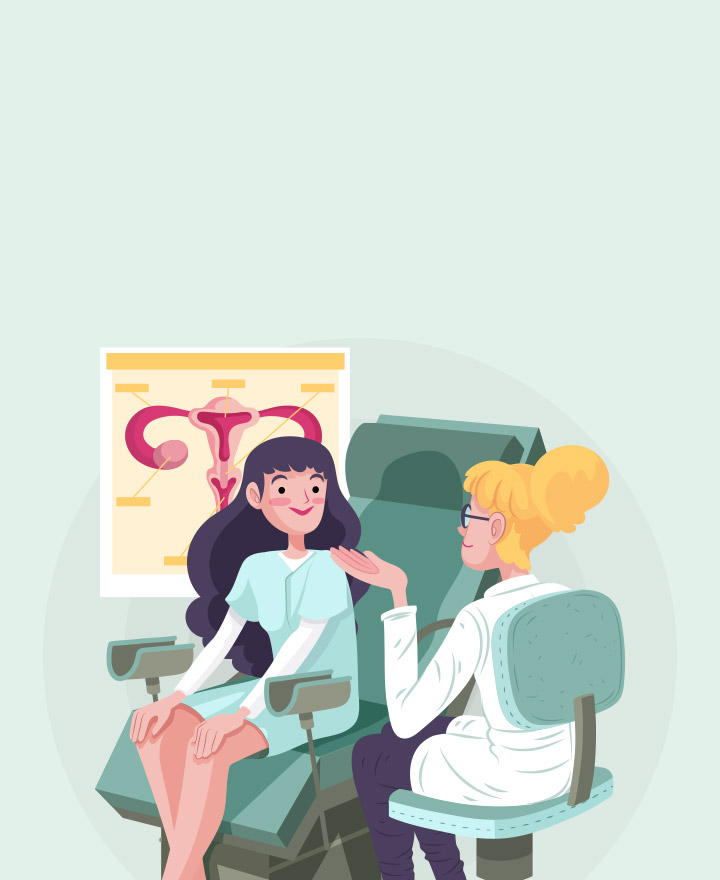

Endometriosis vs. Adenomyosis
Endometriosis and adenomyosis are two closely related but distinct conditions that affect the endometrial tissue of the uterus. Though they present some similar symptoms, both these gynaecological conditions are differentiated by the location of misplaced endometrial tissue. Endometriosis features this tissue growing outside the uterus, while adenomyosis involves its growth within the uterine muscle wall. While both have many health complications, they can be cured. Understanding the difference between endometriosis and adenomyosis is crucial for accurate diagnosis and effective treatment. Read on to know more.
Key Differences
Endometriosis is a condition where endometrial tissue grows outside the uterine walls. It can be seen on the ovaries, fallopian tubes, and other pelvic regions. This condition can cause hormonal changes during the menstrual cycles in women, leading to pain, inflammation, and the formation of scar tissues (adhesions).
Adenomyosis, on the other hand, occurs when the endometrial tissue grows into the uterus' muscular wall (myometrium). This results in an enlarged uterus and can cause heavy/prolonged menstrual bleeding, severe menstrual cramps, and sometimes pain during intercourse.
| Condition | Endometriosis | Adenomyosis |
| Symptoms | Pelvic pain (other than periods), heavy bleeding, pain during/ after sex and during bowel movements or urination, bloating, constipation, nausea, infertility | Enlarged uterus, pelvic pain (during periods), abnormal or heavy bleeding, blood clots during bleeding, pain during intercourse |
| Causes | Unknown. Possible causes include retrograde menstruation, surgical complications, hormonal or immune system issues | Unknown. Possible causes include invasive growth caused by surgery, uterine inflammation that occurs after childbirth, stem cells in the uterine muscle walls |
| Complications | Fertility issues, blood in your poop or pee, depression | Fatigue, dizziness, anxiety, depression, anaemia |
| Prevalence | Occurs more in women in their 30s and 40s | Occurs more in women in the age bracket between 40 and 50 years |
| Treatments | NSAIDs, analgesics, hormone medications, laparoscopy (key-hole surgery) | Adenomyomectomy, non-hormonal medications, hormonal contraceptives and intra-uterine devices, hysterectomy |
Conclusion
Both endometriosis and adenomyosis present significant challenges and can be diagnosed by pelvic examination, ultrasound, MRI scan, and other diagnostic tests. Early diagnosis and a personalised treatment plan tailored to individual needs are crucial. Don’t hesitate to seek medical attention and explore all available options to improve your quality of life.
One of the important components of our overall wellness is also being financially secured. Healthcare emergencies can happen any time, but a good health insurance policy can protect you from such uncertain situations. To know more about Wellness and other health related tips, visit the Wellness Corner.
Source: healthline, webmd, mayoclinic, my.clevelandclinic
Disclaimer: This blog provides general information and discussions about health and related subjects. The information and other content provided in this blog, website or in any linked materials are not intended and should not be considered, or used as a substitute for, medical advice, diagnosis or treatment. Kindly contact your Doctor before starting a new medicine or health regime.
Related Articles
Ovarian Cysts: All You Need To Know
Menopause: Symptoms, Causes, & Treatment
Menstrual Hygiene Tips Every Girl And Women Should Know
How To Deal With Hormonal Acne?
What Is Ovulation And Why Is It Important To Track?
Published on July 15, 2024














 Health Insurance
Health Insurance  Travel Insurance
Travel Insurance  Car Insurance
Car Insurance  Cyber Insurance
Cyber Insurance  Critical Illness Insurance
Critical Illness Insurance
 Pet Insurance
Pet Insurance
 Bike/Two Wheeler Insurance
Bike/Two Wheeler Insurance  Home Insurance
Home Insurance  Third Party Vehicle Ins.
Third Party Vehicle Ins.  Tractor Insurance
Tractor Insurance  Goods Carrying Vehicle Ins.
Goods Carrying Vehicle Ins.  Passenger Carrying Vehicle Ins.
Passenger Carrying Vehicle Ins.  Compulsory Personal Accident Insurance
Compulsory Personal Accident Insurance  Travel Insurance
Travel Insurance  Rural
Rural